As an Amazon Associate, I earn from qualifying purchases
Asian cuisine requires a unique set of kitchen essentials, focusing on tools and ingredients for authentic flavors. Essential items include a wok, rice cooker, steamer, and an assortment of sauces and spices.
Diving into Asian cuisine transforms your kitchen into a hub of diverse flavors and cooking techniques. This culinary journey invites you to explore a variety of cooking tools and staple ingredients essential for creating authentic dishes. Whether you’re simmering a rich Thai curry, crafting delicate Japanese sushi, or stir-frying a vibrant Chinese dish, having the right essentials on hand is crucial.
With these tools, you can master the art of balancing the complex flavors that Asian cuisine is renowned for. Our guide aims to equip your kitchen with everything needed to explore this rich culinary tradition. Embrace the adventure of cooking Asian cuisine by starting with the essentials that bring these flavors to life.

Credit: www.cookbookvillage.com
Introduction To Asian Cuisine
Asian cuisine offers a world of flavor unlike any other. It blends spices, techniques, and traditions from various cultures. This guide explores the essentials of an Asian kitchen. Let’s dive into the delicious world of Asian cuisine.
Diversity Of Flavors
Asian cuisine stands out for its diverse flavors. It combines sweet, sour, salty, and spicy tastes. These flavors come from unique ingredients like soy sauce, ginger, lemongrass, and more. Every dish tells a story of its origin, bringing a piece of culture to your plate.
- Sweet: Often from sugar, fruits, or honey.
- Sour: Comes from vinegar or citrus fruits.
- Salty: Soy sauce and fish sauce add this taste.
- Spicy: Chilies and peppers kick up the heat.
Regional Variations
Asia is large, with many countries and regions. Each area has its unique flavors and dishes. Let’s explore some key regions.
| Region | Characteristics |
|---|---|
| East Asia (China, Japan, Korea) | Rice, noodles, soy. Mild to bold flavors. |
| South Asia (India, Pakistan, Sri Lanka) | Spices, curries, breads. Rich and aromatic. |
| Southeast Asia (Thailand, Vietnam, Indonesia) | Fresh herbs, fruits, fish. Vibrant and tangy. |
Each region uses distinct spices and ingredients. This creates unique tastes and dishes.
Essential Ingredients In Asian Cooking
Asian cuisine bursts with diverse flavors and styles. Key ingredients define its unique taste. From tangy sauces to aromatic herbs, Asian cooking requires essential elements. Let’s explore the must-haves for your kitchen.
Essauces And Condiments
Sauces and condiments form the backbone of Asian dishes. They add depth and complexity to meals. Soy sauce, oyster sauce, and rice vinegar are staples. Fish sauce and sesame oil also feature prominently. These ingredients are versatile and can be used in various dishes.
- Soy Sauce: Salty and rich, ideal for marinades.
- Oyster Sauce: Sweet and savory, perfect for stir-fries.
- Rice Vinegar: Adds a mild acidity to dishes.
- Fish Sauce: Provides a deep umami flavor.
- Sesame Oil: Gives a nutty aroma to recipes.
Herbs And Spices
Herbs and spices bring life to every meal. Ginger, garlic, and scallions are essential. They create fragrant and flavorful bases. Fresh cilantro and lemongrass add freshness. Star anise and five-spice powder introduce warmth.
| Herb/Spice | Use |
|---|---|
| Ginger | Spicy and sharp, great in sauces. |
| Garlic | Intense and aromatic, used in stir-fries. |
| Scallions | Mild and crunchy, garnish for dishes. |
| Cilantro | Fresh and citrusy, sprinkle over finished dishes. |
| Lemongrass | Citrus flavor, great in curries and soups. |
Staple Grains And Noodles
Grains and noodles are the heart of Asian meals. Rice, whether jasmine or sushi, is a must. Noodles come in many forms. Rice noodles for Pad Thai or wheat noodles for ramen. They provide the perfect canvas for bold flavors.
- Jasmine Rice: Fragrant and fluffy, pairs well with curries.
- Sushi Rice: Sticky and short, essential for sushi rolls.
- Rice Noodles: Thin and light, used in soups and stir-fries.
- Wheat Noodles: Chewy and dense, ideal for soups and noodle bowls.
Key Kitchen Tools And Equipment
Embrace the vibrant flavors of Asian cuisine with the right kitchen tools. Essential equipment can transform cooking into a joyful and authentic experience. Discover the must-have items every Asian kitchen needs.
Woks And Steamers
Woks are the cornerstone of Asian kitchens. They are versatile and perfect for stir-frying, steaming, and deep-frying. Choose a carbon steel wok for even heat distribution. A high-quality wok ensures your food cooks quickly and evenly.
Steamers, often made from bamboo, are indispensable for cooking dumplings, fish, and vegetables. They stack on top of each other, allowing multiple dishes to cook over a single pot of simmering water. This method retains nutrients and flavor.
Knives And Cutting Boards
Knives in an Asian kitchen are precise and sharp. A durable chef’s knife can handle vegetables, meat, and fish with ease. A cleaver makes chopping bones and hard vegetables a breeze. Keep knives sharp for safety and efficiency.
Cutting boards protect countertops and keep knives from dulling. Bamboo boards are popular for their durability and eco-friendliness. They’re also gentle on knife blades, making them a long-lasting choice.
Rice Cookers And Other Gadgets
Rice cookers are a staple in Asian cooking. They produce perfect rice every time without watching over a pot. Look for models with settings for different rice varieties. Some even have functions for porridge and slow cooking.
- Food processors save time on chopping and grinding.
- Blenders are great for sauces and smoothies.
- Electric kettles boil water for tea and noodles fast.
Each gadget enhances the cooking process, making it easier and more enjoyable.
Mastering The Art Of Rice Preparation
Rice, a staple in Asian cuisine, requires skill for perfect dishes. Different types of rice impact flavor and texture. Cooking techniques vary for desired outcomes. Master these, and elevate your culinary prowess.
Types Of Rice
Selecting the right rice is crucial. Each type serves unique purposes.
- Basmati: Long grains, fluffy when cooked. Ideal for biryanis.
- Jasmine: Slightly sticky, sweet aroma. Great for Thai dishes.
- Short Grain: Clumpy and tender. Used in sushi.
- Brown Rice: Nutty flavor, more nutrients. Takes longer to cook.
- Sticky Rice: Glutinous texture, for desserts or dim sum.
Cooking Techniques
How you cook rice matters. Each technique suits different types.
| Technique | Rice Type | Outcome |
|---|---|---|
| Boiling | Basmati, Brown | Separate grains |
| Steaming | Jasmine, Short Grain | Sticky, moist |
| Absorption | All types | Flavorful, tender |
| Pressure Cooking | Sticky, Brown | Fast, consistent |
Using a rice cooker simplifies the process. Measure rice and water. Press start. Enjoy perfect rice every time.
Stovetop methods need attention. Rinse rice first. Use the right water ratio. Simmer until water absorbs.
For fluffy rice, let it steam. Cover the pot after cooking. Wait for ten minutes. Fluff with a fork.
Rice is more than a side. It’s the heart of many Asian dishes. Master these types and techniques. Create flavorful, authentic meals.
The Magic Of Fermentation And Pickling
Fermentation and pickling hold a special place in Asian cuisine. These techniques not only preserve foods but also enhance flavors and nutritional values. Fermented foods introduce beneficial bacteria into our diet, while pickling methods can transform the taste and texture of fresh produce. Let’s dive into the fascinating world of these culinary practices.
Fermented Foods
Fermentation works its magic through microbes. These tiny helpers turn basic ingredients into flavor-packed superfoods. Here are some must-try fermented essentials:
- Kimchi – Spicy Korean staple made from cabbage and radish
- Miso – Japanese seasoning produced by fermenting soybeans
- Tempeh – Nutritious fermented soy product, originating from Indonesia
- Sauerkraut – Fermented cabbage, known for its tangy taste
Pickling Methods
Pickling can be quick or traditional. Quick pickling is done in hours, while traditional methods take longer. See the table below for common pickling ingredients:
| Ingredient | Method | Time |
|---|---|---|
| Cucumbers | Quick | 24 hours |
| Carrots | Traditional | 1-2 weeks |
| Onions | Quick | 30 minutes |
| Beets | Traditional | 2 months |
Start pickling with vinegar, water, salt, and sugar. Add spices like dill, mustard seeds, or garlic for extra flavor. Use glass jars to store your pickles and enjoy them with your meals!
The Technique Of Stir-frying
The art of stir-frying is a hallmark of Asian cuisine. This cooking method brings out the flavors in food quickly and healthily. To master stir-frying, understanding two key elements is crucial: Heat Control and Ingredient Sequence. Let’s explore these components.
Heat Control
Managing the heat is vital in stir-frying. The goal is to cook food fast at high temperatures. This seals in flavors and keeps the food crispy. A well-controlled flame makes this possible. Use a wok for best results. Its shape distributes heat evenly. Here are tips for perfect heat control:
- Preheat the wok until it smokes lightly.
- Use cooking oil with a high smoke point, like peanut or canola oil.
- Adjust the flame to keep the temperature constant.
Ingredient Sequence
Adding ingredients in the right order is key to a successful stir-fry. This ensures everything cooks perfectly. Follow this sequence:
- Heat the oil and cook aromatics like garlic or ginger first.
- Add the meat or protein, cooking until it’s nearly done.
- Introduce vegetables based on their cooking times. Begin with the ones that take longer.
- Finally, add sauces and quick-cook items like green onions or bean sprouts.
Remember to keep stirring. This method cooks food quickly and evenly.
Soups And Broths From Scratch
Every bowl of soup tells a story of culture, tradition, and taste. Creating soups and broths from scratch is an art in Asian cuisine. These warm, comforting dishes are a staple in many households. Let’s dive into the essentials of crafting these soulful bowls at home.
Stocks Basics
The foundation of any great soup is the stock. A rich, flavorful stock can elevate your soup from simple to sublime. Begin with fresh ingredients. Include bones for depth, vegetables for sweetness, and herbs for aroma. Simmer these elements slowly. The key is patience. As the stock cooks, flavors concentrate, creating a rich base for your soups and broths. Remember to strain your stock well. A clear, clean stock is the sign of a skilled cook.
- Bones: Chicken, beef, or pork for richness
- Vegetables: Onions, carrots, and celery add sweetness
- Herbs: Coriander, star anise, and green onion for aroma
Regional Soup Specialties
Asia’s culinary landscape boasts a variety of regional soup specialties. Each region adds its twist to this comforting dish. Explore the flavors of Tom Yum from Thailand. Experience the complexity of Pho from Vietnam. Savor the spicy kick of Kimchi Jjigae from Korea. Dive into the umami-rich miso soup from Japan. These soups embody the essence of their cuisines.
| Country | Soup Specialty | Key Ingredients |
|---|---|---|
| Thailand | Tom Yum | Lemongrass, kaffir lime leaves, galangal |
| Vietnam | Pho | Beef bones, star anise, rice noodles |
| Korea | Kimchi Jjigae | Kimchi, tofu, gochugaru (chili powder) |
| Japan | Miso Soup | Miso paste, seaweed, tofu |
Desserts And Sweet Treats
Asian Cuisine is not just about savory dishes. The desserts and sweet treats are equally essential. They offer a perfect finish to any meal. This guide dives into the must-have items for creating traditional and modern Asian desserts.
Traditional Desserts
Asian desserts have a rich history. They often include rice, beans, and tropical fruits. Let’s explore some kitchen essentials for these classics.
- Sticky Rice – For dishes like Mango Sticky Rice.
- Red Bean Paste – A filling for Mochi and Mooncakes.
- Coconut Milk – Used in Kueh and many more.
- Green Tea Powder – For making Matcha flavored sweets.
Modern Twists
Chefs are reimagining traditional desserts. They add new flavors and techniques. Here are some modern essentials.
- Chocolate – Fuses with traditional recipes.
- Fruit Purees – Adds a fresh twist to classics.
- Molecular Gastronomy Kits – For chefs pushing boundaries.
- Ice Cream Makers – To craft homemade Asian-inspired flavors.
Pairing Beverages With Asian Dishes
Asian dishes burst with diverse flavors. Pairing the right beverage elevates the experience. Perfect matches enhance each bite. Below, explore tea and alcohol pairings for Asian cuisine.
Tea Varieties
Tea complements Asian food wonderfully. Each variety offers unique benefits.
- Green Tea: Light and fresh, pairs well with sushi and seafood.
- Oolong Tea: Rich, a great match for Chinese dim sum.
- Jasmine Tea: Fragrant, enhances the flavors of spicy dishes.
- Matcha: Bold and earthy, goes well with Japanese desserts.
Alcoholic Accompaniments
Selecting the right alcohol is key for taste harmony.
| Cuisine | Alcohol Type | Dish Example |
|---|---|---|
| Japanese | Sake | Teriyaki Chicken |
| Chinese | Tsingtao Beer | Chow Mein |
| Korean | Soju | Kimchi Stew |
| Thai | Thai Iced Beer | Pad Thai |
Match flavors carefully. Sake suits delicate tastes. Soju cuts through rich, spicy flavors. Beer offers a refreshing contrast to complex, savory dishes.

Credit: scottsbookshop.com
Creating A Balanced Asian Meal
When crafting an Asian meal, balance is key. Asian cuisine is renowned for its harmony of flavors, colors, and textures. To achieve this, understanding the art of menu planning and nutritional considerations is essential. Let’s dive into the essentials of creating a well-rounded Asian feast that delights the senses and nourishes the body.
Menu Planning
Begin by selecting a variety of dishes. Aim for a mix of protein, vegetables, and carbs. Think about including a stir-fry, a soup, and a rice or noodle dish. This variety ensures a colorful plate and a range of flavors. Use these steps:
- Choose a main dish with meat or tofu.
- Add a vegetable side dish for fiber.
- Include rice or noodles for energy.
- Finish with a light soup to cleanse the palate.
Nutritional Considerations
Nutrition is vital in meal preparation. Asian meals often have a good balance of carbohydrates, proteins, and vegetables. Use fresh ingredients and cook with methods like steaming and stir-frying to preserve nutrients. Consider these tips:
- Include a variety of vegetables for vitamins.
- Opt for lean proteins like fish or chicken.
- Use whole grains such as brown rice.
- Limit the use of salty sauces and sugars.
Tips For Authentic Asian Cooking At Home
Bringing the rich flavors of Asia into your kitchen starts with the right approach. Explore our tips for Authentic Asian Cooking at Home. Let’s dive into the essentials.
Shopping For Ingredients
Finding the right ingredients is key. Start with these steps:
- Visit local Asian markets for fresh, authentic products.
- Look for key staples like soy sauce, rice vinegar, and sesame oil.
- Stock up on rice, noodles, and spices like ginger and garlic.
Tip: Always check the expiration dates for freshness.
Adapting Recipes
Not every recipe needs to be followed to the letter. Here’s how to adapt:
- Substitute ingredients if you can’t find the exact match. Use lemon if no lime.
- Adjust spice levels to suit your taste. Less chili can be okay.
- Experiment with cooking times. Veggies can be crisper or softer.
Remember, cooking is an art. Feel free to make it your own.

Credit: www.amazon.com
Conclusion: Embracing Asian Culinary Traditions
Exploring Asian cuisine opens a world of flavors. It’s not just about cooking. It’s a journey into rich traditions and cultures. This guide aims to equip you with kitchen essentials. But the adventure doesn’t stop here.
Continued Learning
Mastering Asian cooking is a lifelong journey. Start with basic recipes. Gradually explore more complex dishes. Embrace mistakes as learning opportunities. Seek out resources:
- Cookbooks from renowned Asian chefs
- Online cooking classes
- YouTube tutorials for visual guidance
Join online communities. Share your experiences and learn from others.
Sharing The Experience
Cooking is more fun with friends and family. Host cooking nights. Try new recipes together. Share your favorite dishes. Celebrate festivals with traditional Asian meals. This strengthens bonds and deepens your appreciation for Asian cultures.
Remember, every dish tells a story. Each ingredient carries history. With these kitchen essentials, you’re ready to start your own culinary tale. Embrace the journey. Let the rich flavors of Asia inspire your cooking.
Frequently Asked Questions
What Are Five Basic Ingredients In Asian Foods?
Five basic ingredients in Asian cuisine are rice, soy sauce, garlic, ginger, and tofu.
What Are The Essential Asian Sauces?
Essential Asian sauces include soy sauce, hoisin, oyster sauce, fish sauce, and sesame oil. They add depth and flavor to numerous dishes.
What Are Must-have Asian Spices?
Essential Asian spices include ginger, garlic, turmeric, lemongrass, star anise, cinnamon, and Szechuan peppercorns for authentic flavor profiles.
Which Knives Are Best For Asian Cooking?
A Santoku or Nakiri knife excels in Asian cooking, perfect for precise cutting and chopping of vegetables and meats commonly used in Asian recipes.
What Is A Traditional Asian Cookware Item?
A wok is a traditional Asian cookware item, ideal for stir-frying, steaming, and deep-frying, offering versatile cooking methods in Asian cuisine.
How To Store Asian Spices?
Store Asian spices in airtight containers, away from direct sunlight and heat, to preserve their aroma and prolong their shelf life.
Can I Use A Rice Cooker For All Grains?
Yes, a rice cooker can cook various grains like quinoa, barley, and different rice types, adjusting water ratios and cooking times accordingly.
What’s Essential For A Japanese Kitchen?
Japanese kitchens often feature a rice cooker, a selection of sharp knives, a hangiri for sushi rice, and a tamagoyaki pan for Japanese omelets.
What Makes A Good Soy Sauce?
A good soy sauce is traditionally brewed, free from additives, has a balanced umami flavor, and complements various dishes without overpowering them.
Are Bamboo Steamers Worth It?
Bamboo steamers are worth it for their ability to gently cook food, preserve nutrients, and impart a subtle bamboo aroma, enhancing the dish’s flavor.
Conclusion
Embarking on an Asian culinary journey just got easier. With the right tools and ingredients outlined in this guide, your kitchen is set for success. Embrace these essentials to unlock the authentic flavors of Asia. Every dish you create now has the potential to be a masterpiece.
Let’s cook up a storm!
As an Amazon Associate, I earn from qualifying purchases


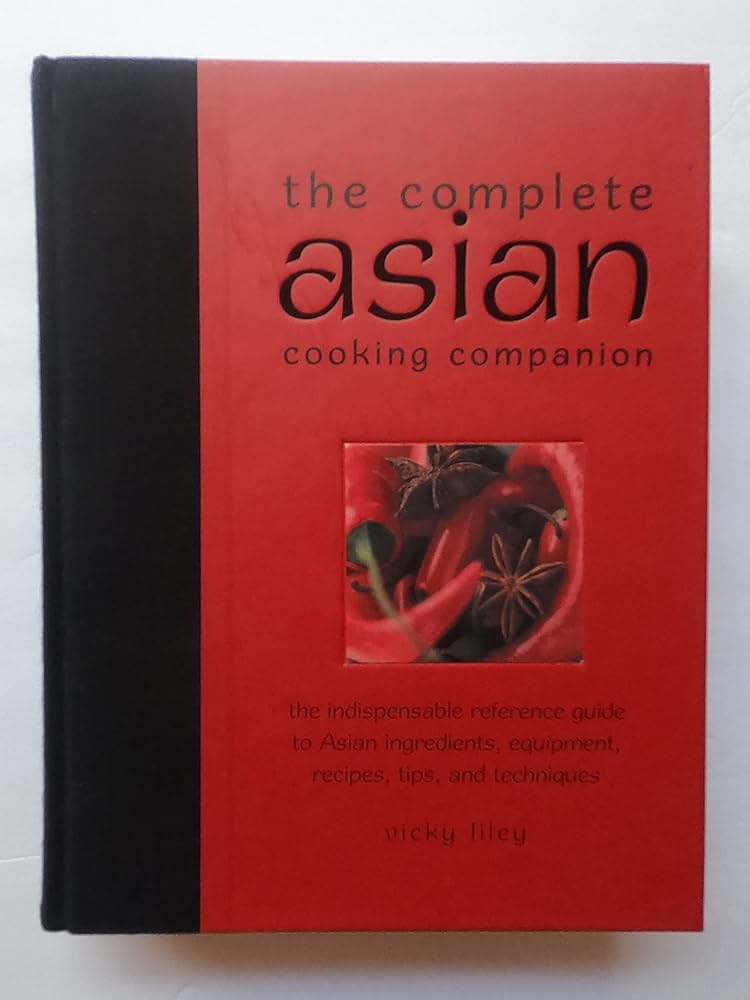
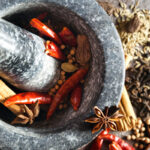




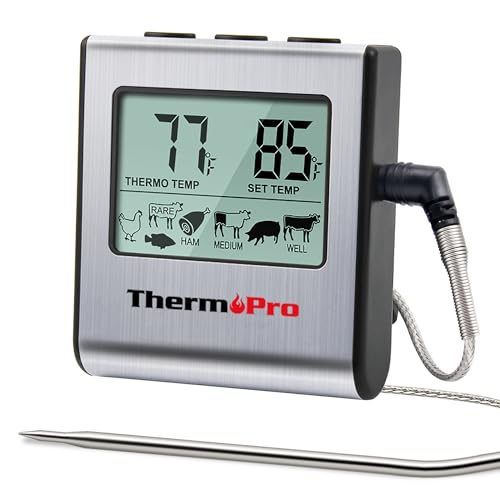

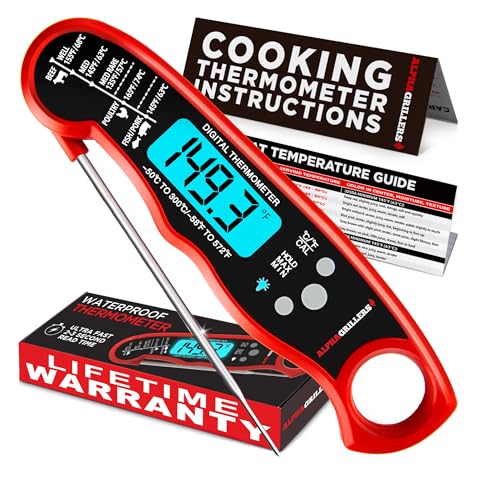
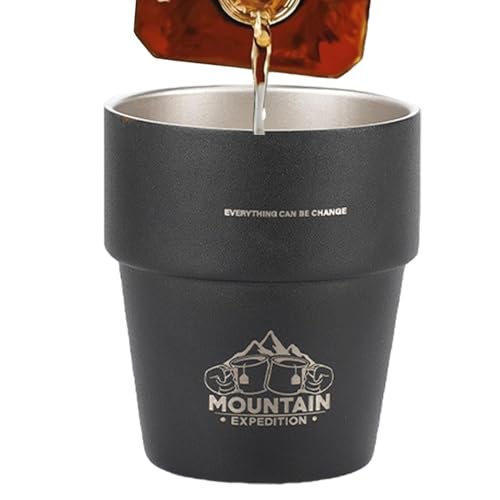
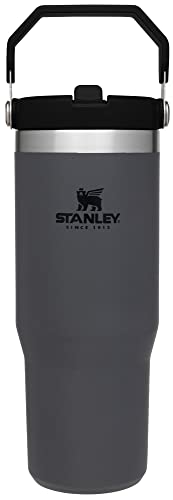
Leave a Reply